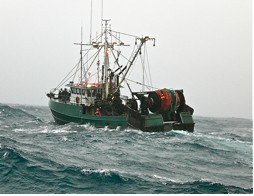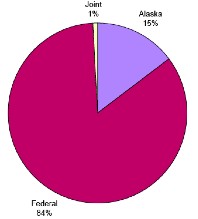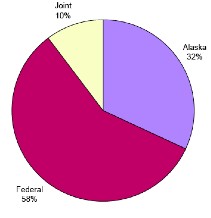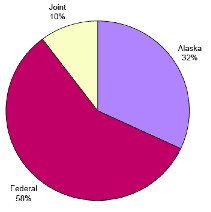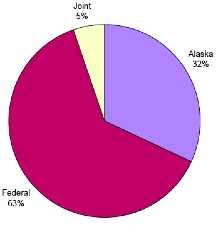SUMMARY
| What are Alaska’s commercial fisheries? Where do they occur? Who manages them? What is their economic impact?
Fisheries in Alaska occur in Alaska’s rivers, lakes, and marine waters from the shore out to the limit of the 200 mile Exclusive Economic Zone (EEZ). Generally speaking, marine fisheries are managed by the State of Alaska, by the federal government through the National Marine Fisheries Service, or through joint management (these are primarily fisheries in federal waters managed by the State of Alaska under federal delegation). The State manages most fisheries from shore out to the three mile limit (State waters), and NMFS manages most fisheries in the 3-200 mile EEZ. The Federal government has primary jurisdiction over groundfish, halibut (in cooperation with the International Pacific Halibut Commission (IPHC) and most sablefish fisheries. Joint jurisdiction, resulting from a federal delegation of authority, is found in the Bering Sea crab fisheries, as well as in the Southeast Alaska Chinook salmon troll fishery which is also regulated through the Pacific Salmon Treaty with Canada. The State of Alaska has primary jurisdiction over all other major fisheries in Alaska, including salmon, shellfish, and herring. In addition, it manages inshore sablefish fisheries in Southeast Alaska and a portion of the pollock and Pacific cod fisheries in nearshore waters. In 2007, 2.8 million metric tons of wild seafood was landed in Alaska’s fisheries; fisheries occurring in federal waters accounted for 84.4 percent of the total. Of the total ex-vessel value of Alaska commercial landings that year, federally managed fisheries accounted for 58 percent of the total ex-vessel value, while State managed fisheries represented about 32 percent. The remaining 10 percent was landed in fisheries under joint management. |
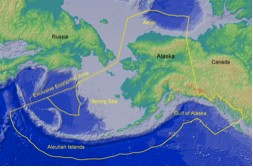 (Top) The F/V Caravelle, homeported in Kodiak, Alaska. (Center) The Federal waters off of the coast of Alaska (shown as the “Exclusive Economic Zone”, above) encompass hundreds of thousands of square miles of ocean. State waters (0-3 miles) hug the coastline. Marine fisheries in Alaska are managed under a number of State, Federal and International treaties and agreements.
(Top) The F/V Caravelle, homeported in Kodiak, Alaska. (Center) The Federal waters off of the coast of Alaska (shown as the “Exclusive Economic Zone”, above) encompass hundreds of thousands of square miles of ocean. State waters (0-3 miles) hug the coastline. Marine fisheries in Alaska are managed under a number of State, Federal and International treaties and agreements.
|

